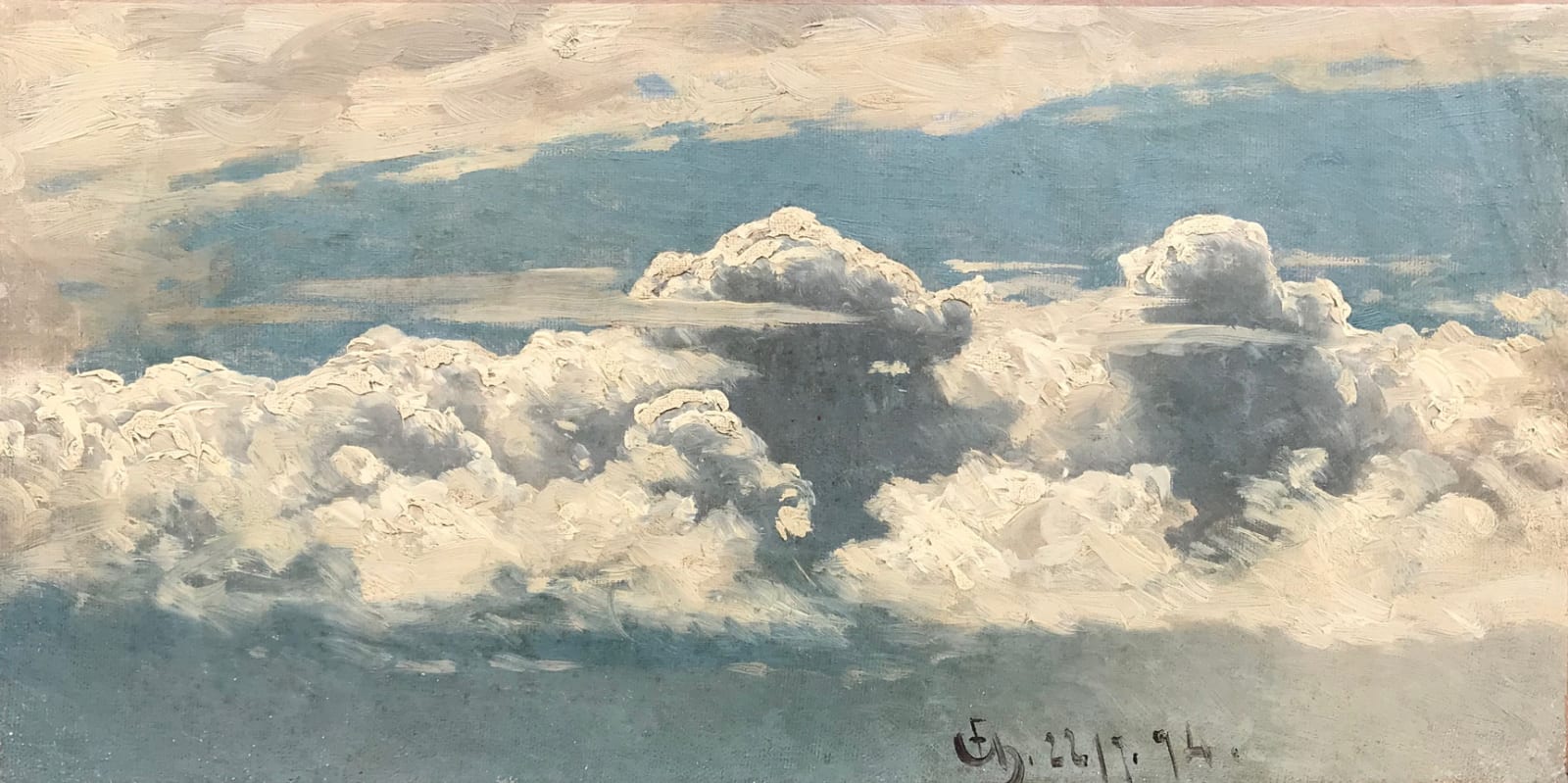-
Artworks

Jean-Michel CELS THE HAGUE, 1819-BRUSSELS, 1894
Study of Sky and CloudsOil on canvas25 x 50 cmSigned and dated lower right: Cels. 22/7.74.
SOLD
Jean-Michel Cels was born in The Hague on 11 August 1819, the second of five children and the son of painter Cornelis Cels. His father left the Low Countries for Paris in 1800 and proceeded to travel for seven years in Italy, including in Florence and Naples but living chiefly in Rome, where he produced drawings and paintings that revealed his great attention to the landscape and the studies of the skies. Thus it was from an early age that Jean-Michel was immersed in a multi-faceted artistic climate, and he learnt to draw by seeking inspiration in the numerous sketches that his father had brought back from Italy. His artistic training proper, however, began in the workshop of Pierre-Jean Hellemans, a landscape painter considered as the forerunner of Romantic painting in Belgium. Following in his father’s footsteps, Jean-Michel took off for Italy, passing through Rome, in 1847 full of curiosity and anticipation; his journey was to be only brief and the following year he was back in Belgium where, among other things, he showed three Roman landscapes at the Exposition Nationale de Beaux-Arts in Brussels in 1848: Vue de l’aqueduc de l’Acqua Felice et d’une partie des murs de Rome; Effect de crepuscule, Vue du Pont Lamentano (sic) pres de Rome and Murs de Rome, effet du matin (with the numbers 100, 101 and 102). Although their location is unknown, the titles of these paintings are proof of the interest of Jean Michel in lighting effects on the landscape. He moved to Paris, by then the most vibrant symbol of modernity in culture and the arts, in 1850, showing two paintings at the Salon depicting landscapes from his own country, Paysage e Site du Brabant. From that date on he gradually began to disappear from the art scene, eventually dying in Brussels in 1894.
The apparent abscence of works by Cels can explain the lack both of information on this refined artist and of the presence of his works in public collections. He was not to be rehabilitated until 1997, when Christie’s of London auctioned a series of paintings and drawings depicting mostly skies, produced in Brussels between 1838 and 1842. These paintings, all of them oil on paper, may be considered preparatory studies designed rapidly to capture barely perceptible changes in the weather and to be reused as models for paintings in the fuller sense of the term back in the workshop. Some of these studies entered prestigious collections such as that of Eugene and Chiara Taw and that of John and Charlotte Gere, both known for being focused on en plein air studies of skies of European artists of the eighteenth and nineteenth centuries. Many of these studies have been present in temporary exhibitions in the United States, England, Japan and Australia.
The painting under discussion here shows the sky on 22 July 1874, on a summer’s day with the clouds playing a key role in the composition as they stretch their shadow over the earth. This oil painting on canvas cannot be dismissed as a mere study because it is a clearly fully-fledged painting in its own right, finished, signed, dated and situated by the painter unquestionably with artistic intent.
The painting reflects the influence of three different artistic trends: Romanticism, Symbolism and Impressionism. Its vaguely dreamy aspect is reminiscent of some of Caspar David Friedrich’s landscapes, while the looming clouds echo the watercolours of Symbolist painter André des Gachons, and the artist’s skill at capturing the changing weather conditions reflects in the full the dominant Impressionist mood of the day.
Thus on the one hand we have a clear meteorological purpose reflecting an almost scientific determination to depict the reality of atmospheric change, with Cels bent on faithfully capturing the climatic events taking place around him; at the same time, we should not overlook its fantastic, symbolic component which helps to impart a magical aura to the picture. The artist offers us a Romantic interpretation of the stormy sky, of the sun triumphing over gloom, imbuing his work with a mystical charge that makes him one of the most interesting painters of his generation.
Join the mailing list
Subscribe to our newsletter to receive all the news about exhibitions, fairs and new acquisitions!
